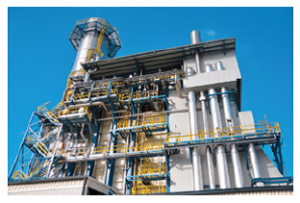Project management database, analysis tool
 Challenge. The coordination and execution of all the technical proposals generated by the staff to improve the plant takes a huge effort. Many good ideas are formulated; however, those ideas must be recorded, documented, analyzed, and a final decision needs to be taken. After this, the projects need to be managed, tracked, reported, and fiscally controlled. Finally a post-project review is required.
Challenge. The coordination and execution of all the technical proposals generated by the staff to improve the plant takes a huge effort. Many good ideas are formulated; however, those ideas must be recorded, documented, analyzed, and a final decision needs to be taken. After this, the projects need to be managed, tracked, reported, and fiscally controlled. Finally a post-project review is required.
Solution. Plant maintenance staff designed a software tool based on Microsoft SharePoint that tracks all steps in the process of capturing and analyzing ideas, including:
- Formulation of the initial idea.
- Relevant data—including improvement category, estimated budget, payback time, timeline, owner approval, project manager, etc.
- All management feedback.
- All attributed actions and results.
- Request for analysis.
- Performed analysis.
- A documented management-of-change process.
- Management decision (approved, postponed, canceled).
The project management database and analysis tool captures all relevant data and permits us to retrieve the status on all of the suggested ideas from the staff.
Results. Staff members are more motivated than ever, because they know what is actually done with their ideas. The project database gives everyone a good overview of all project ideas—including where some ideas might overlap or how one idea might support another. In addition, the database provides:
- Ability to provide instant feedback on the approval status of a project idea.
- A better budgetary control of project budgets.
- Better project tracking and reporting.
- A fully documented management-of-change process.
Project participants:
Peter Burt, plant manager
Frank Alaerts, engineering manager
Entire O&M Staff
Competency management system
Challenge. Developing staff often is relatively easy; however, maintaining and reviewing staff competencies are more difficult. We detected in the annual performance reviews that there was not always enough attention on a competency-management cycle and that staff and management didn’t always know where to apply the development focus.
Also, often essential parts of their entire competence requirements, that perhaps were not core skills, were being missed and not correctly developed. Staff also didn’t know the entirety of what was expected of them and that a completed competency profile consists of three essential pillars: job description, behavioral competencies, and technical expertise.
Solution. To solve these issues, we knew we had to design an effective and consistent standard of competence management for our staff. We identified key competency requirements, and then assessed the shortfalls and associated risks against our required standards.
We also needed to develop methods to meet the standards, as well as establish requirements for training, development, and assessments. With these aspects implemented, we had the essentials of a fit-for-purpose competency management system (CMS), which now will be used to ensure our staff are effectively trained and developed.
Next, we discussed our needs with a specialized HR consultant who provided a software package to fully support our requirements on this issue. We are now implementing and using this system, which is named “e-OK.” Thanks to the e-OK package the staff competences are now better managed, and a fully automated software system reduces the operational and administrative workload.
Results. A good and accurate job description contains the key goals and requirements for the job, the position and reporting requirements in the organization, the areas of responsibilities, and the internal and external customers and suppliers. This is an important foundation before moving on to the other aspects of competency.
The next aspect concerns behavioral competence. This is the set of values, attitudes, and motivation that are observable in employee behavior. There are minimum expectations for staff to carry out their job, but our system focuses on three core competences:
- Company required behavior to set the correct culture.
- Functional competences, which are applicable to a specific role.
- Personal competences, which are dedicated to a specific person, usually aimed at developing the individual.
The final aspect is technical expertise. These competences describe the specific knowledge or technical skills that are vital to execute the requirements of the role. They are related to the function and usually will be identical for all job holders of that function.
Our competence profiles are now implemented in the e-OK software and are managed in an annual cycle. We added personal objectives to each employee profile, and we are now at the stage where the software is being used to carry out the performance-appraisal interviews and evaluation, which in turn sets the improvement cycle for each employee. The software also can be developed to include salary benchmarking, recruitment, and selection.
Evaluation has now become a key factor in our business performance. Through the evaluation of technical and behavioral competences we can map the performance of employees and we can then help them to improve in their personal development.
After a review cycle, a graphical competence variance profile can be made per person, as shown below, for the core and job competencies, and then again for the technical competencies.
There are three distinct levels of scoring the efforts made by the employee:
- Low: Last year noted no effort to increase competence level for this competency.
- OK: Normal evolution in this skill set.
- Excellent: the past year, major efforts in place to develop these skills further.
The e-OK software can be used for a wide range of HR-related activities, some of which we will develop.
Project participants:
Peter Burt, plant manager
Stefanie DeSchepper, HR/business services manager
Entire O&M Staff
T-Power NV
Owned by ITOCHU, Siemens Project Ventures, Tessenderlo Chemie, and Tokyo Gas.
Operated by NAES Corp
420-MW, gas-fired, 1 ×1 combined cycle located in Tessenderlo, Belgium
Plant manager: Peter Burt



